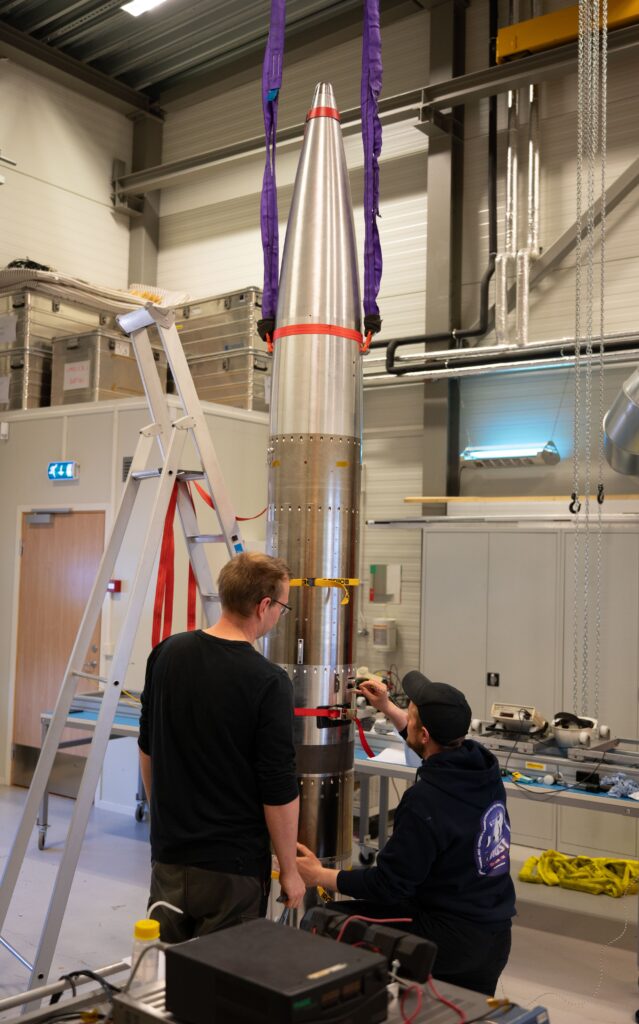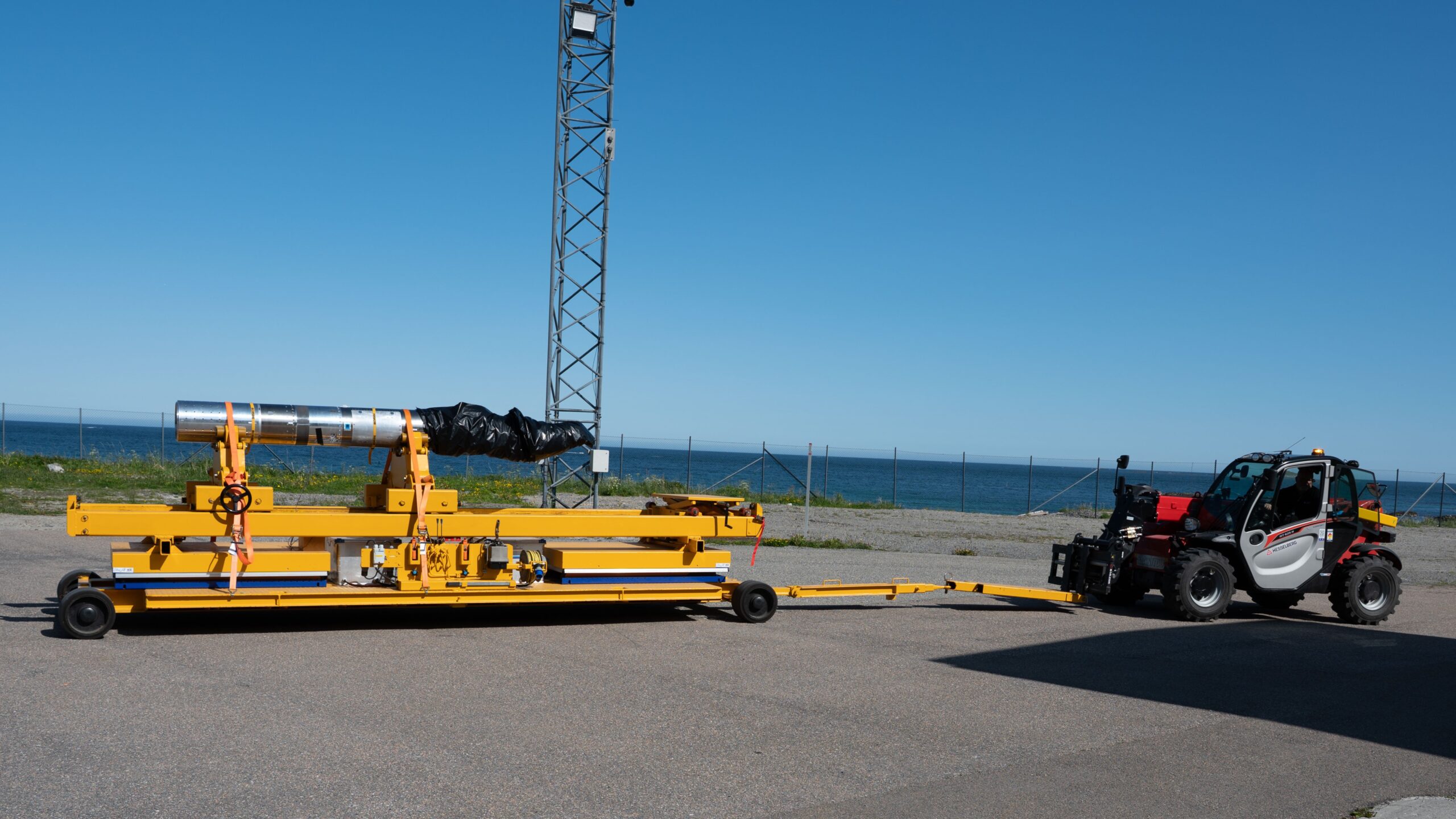The Norwegian research rocket MaxiDusty-2 is ready for a very special research mission in a Norwegian context.
At the outer limit of the Earth’s atmosphere, there are dust and particles that scientists long have suspected are remnants of meteorites that burn up when they enter the atmosphere.
In 2016, MaxiDusty-1 was launched with a built-in spectrometer to look at the composition of these particles, and this year the researchers from UiT The Arctic University of Norway, University of Oslo, The Leibniz Institute of Atmospheric Physics (IAP), Department of Meteorology at Stockholm University are ready to take it all a big step further.
“I think I have my words intact when I say that MaxiDusty-1 was one of the most advanced Norwegian research rockets up to that time,” says Kolbjørn Blix, head of Andøya Space Sub-Orbital. “But for MaxiDusty-2, we were challenged by the scientists to create a rocket that can collect physical samples of these particles, which can then be studied more closely in a larger laboratory here on Earth.”
Funded through ESA-PRODEX
“Maxidusty-2 is a rocket campaign that is carried out as part of the Esrange and Andøya Special Project (EASP) agreement. The agreement is between the five countries: Norway, Sweden, Germany, France and Switzerland,” says Pål Brekke from the Norwegian Space Agency, who is also chairman of ESA’s program committee for sounding rocket activities, which oversees the EASP agreement.
The Norwegian Space Agency has funded Maxidusty-2 with more than NOK 18 million through the PRODEX programme of the European Space Agency (ESA).
“Norway’s participation in ESA provides great opportunities for Norwegian research institutions and the Norwegian space industry,” continues Brekke, who is also chairman of ESA’s Prodex programme committee. “The Prodex programme has proven to be very useful for Norwegian research communities and Norwegian researchers’ opportunities to participate in the scientific planning of space projects, they get access to the best of observations, and it gives Norwegian industry the opportunity to participate in groundbreaking technology development.”
Advanced Norwegian research rocket
In Andøya Space’s engineering workshop, advanced Norwegian research rockets are specially built in close collaboration with Norwegian research communities.
“The purpose of a research rocket is to conduct research on something at a given height of the atmosphere, and the researchers usually have an experiment or instrument they want to use to do the job. Then it’s our job here on Andøya to build everything that is needed to make that instrument work up there,” says Blix. “And that’s a lot. I am very proud of the work done by our competent engineers.”

The MaxiDusty missions are led by UiT The Arctic University of Norway, which has constructed several advanced experiments and instruments that will be onboard the rocket. What particularly distinguishes MaxiDusty-2 from its predecessor is the collection of particles and dust, which creates some challenges for the rocket engineers on Andøya.
“It’s very exciting to build something that, in a way, will taste the upper part of the mesosphere, and take it back home,” says Blix. “For our part, this means that the rocket must be equipped with a parachute and flotation devices, delivered by DLR Moraba, in addition to being waterproof so that the samples are not contaminated. When the rocket has done its job up there, it lands with a parachute in the sea and has to float until it is picked up by a boat waiting.”
The dust particles in the mesosphere often bind to water particles which then freeze into ice and eventually form large ice clouds, known as noctilucent clouds. The area where the dust particles are located is too high up for airplanes and balloons, but at the same time too low for satellites. Only research rockets can carry out so-called in-situ measurements in the mesosphere.
“These are phenomena that we use the Alomar Observatory to measure, among other things. We can both remotely measure from the ground, and ensure launch at the best possible time with regard to desired scientific conditions while the rocket is flying up in space. In addition, we have been collecting data on this for the past thirty years,” says Blix. “It will be very interesting to see what the researchers at UiT manage to find out from the samples that will be collected.”
The launch period is between June 30th and July 14th, from 7:30 AM to 1:45 PM local time, and will be broadcasted live on Andøya Space’s YouTube channel for those interested.
Stay tuned: https://www.youtube.com/@andoyaspace/live
More information
For more information about the launch, please reach out to contact person for MaxiDusty-2, Kolbjørn Blix.

